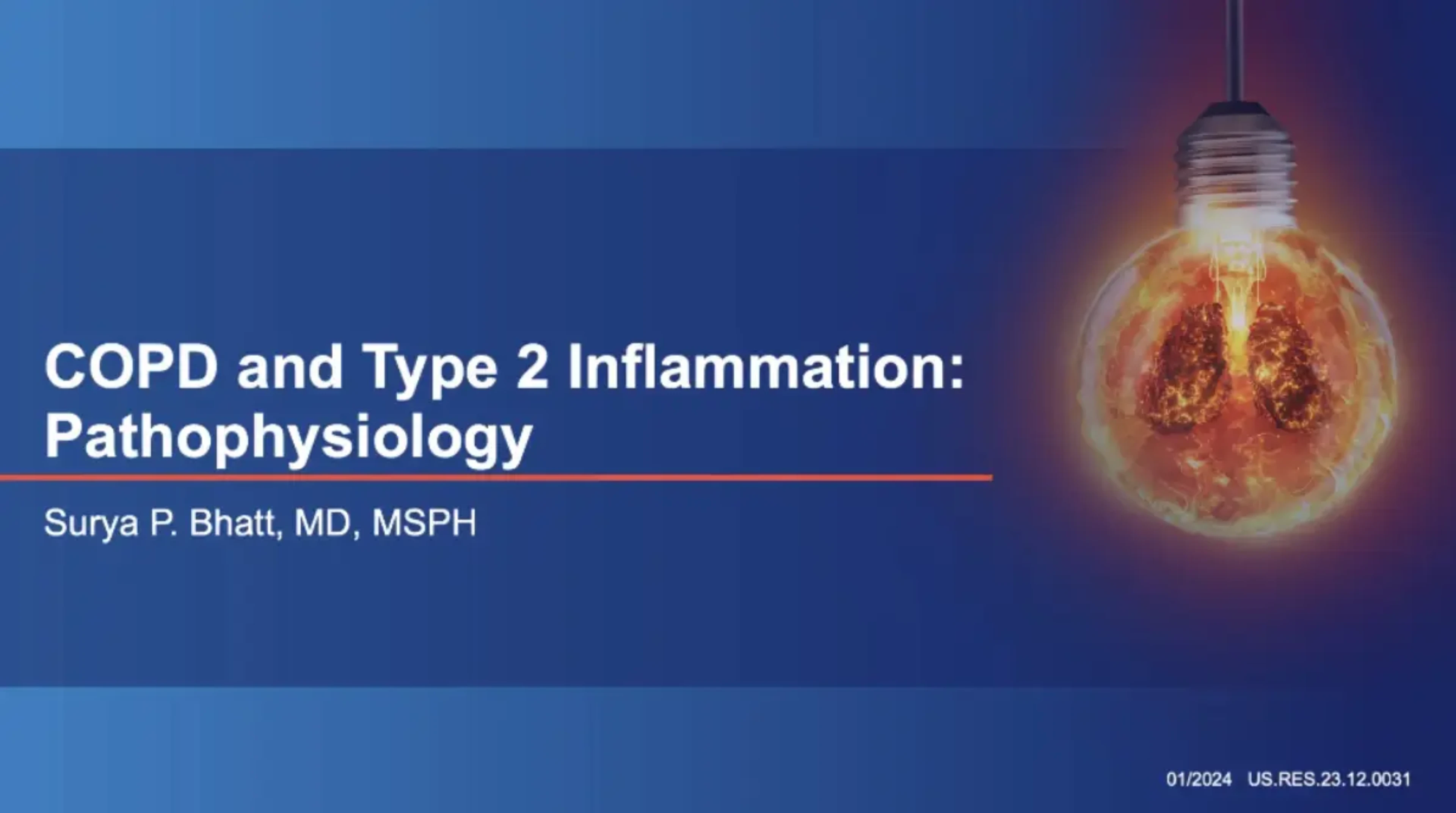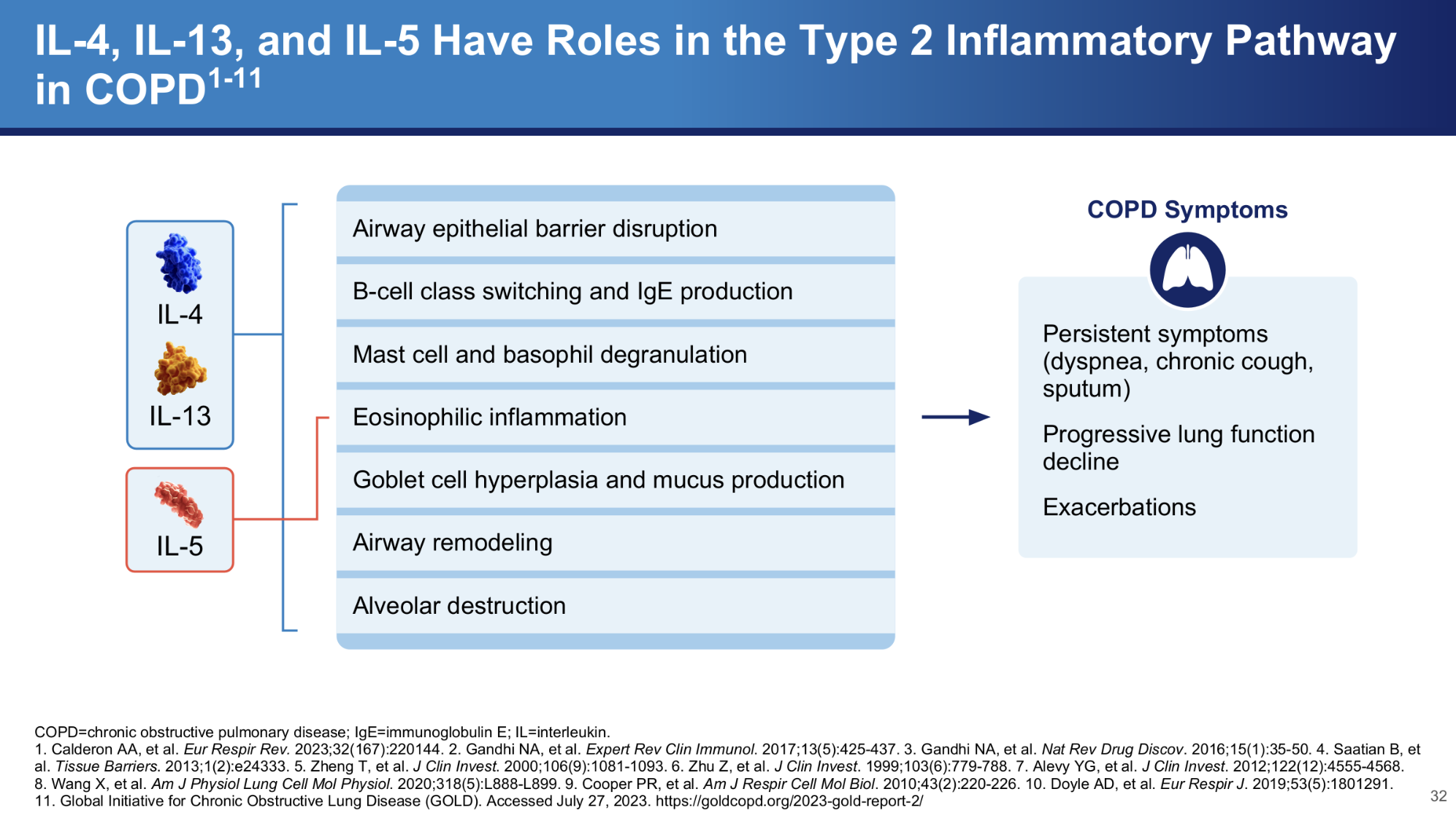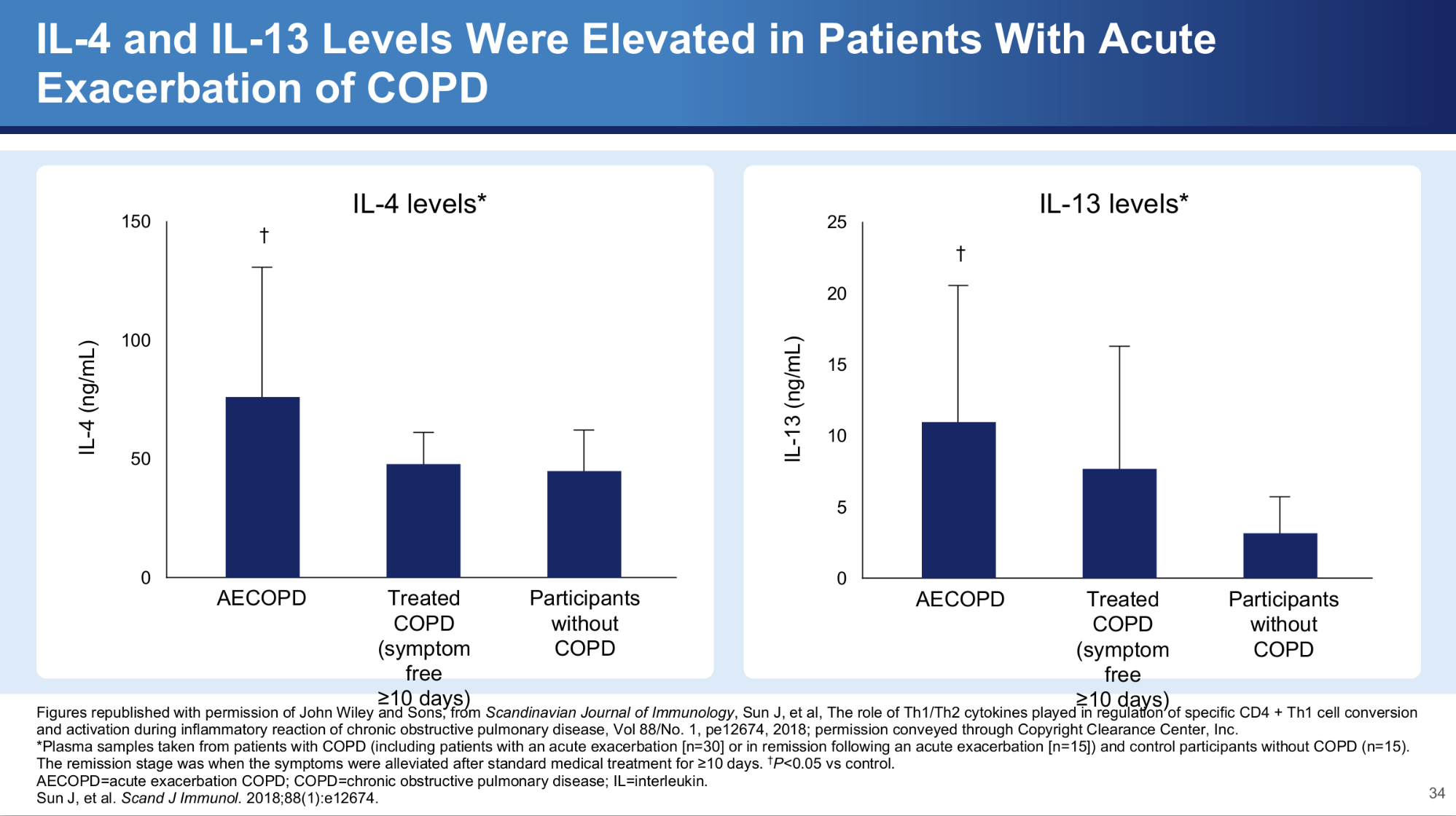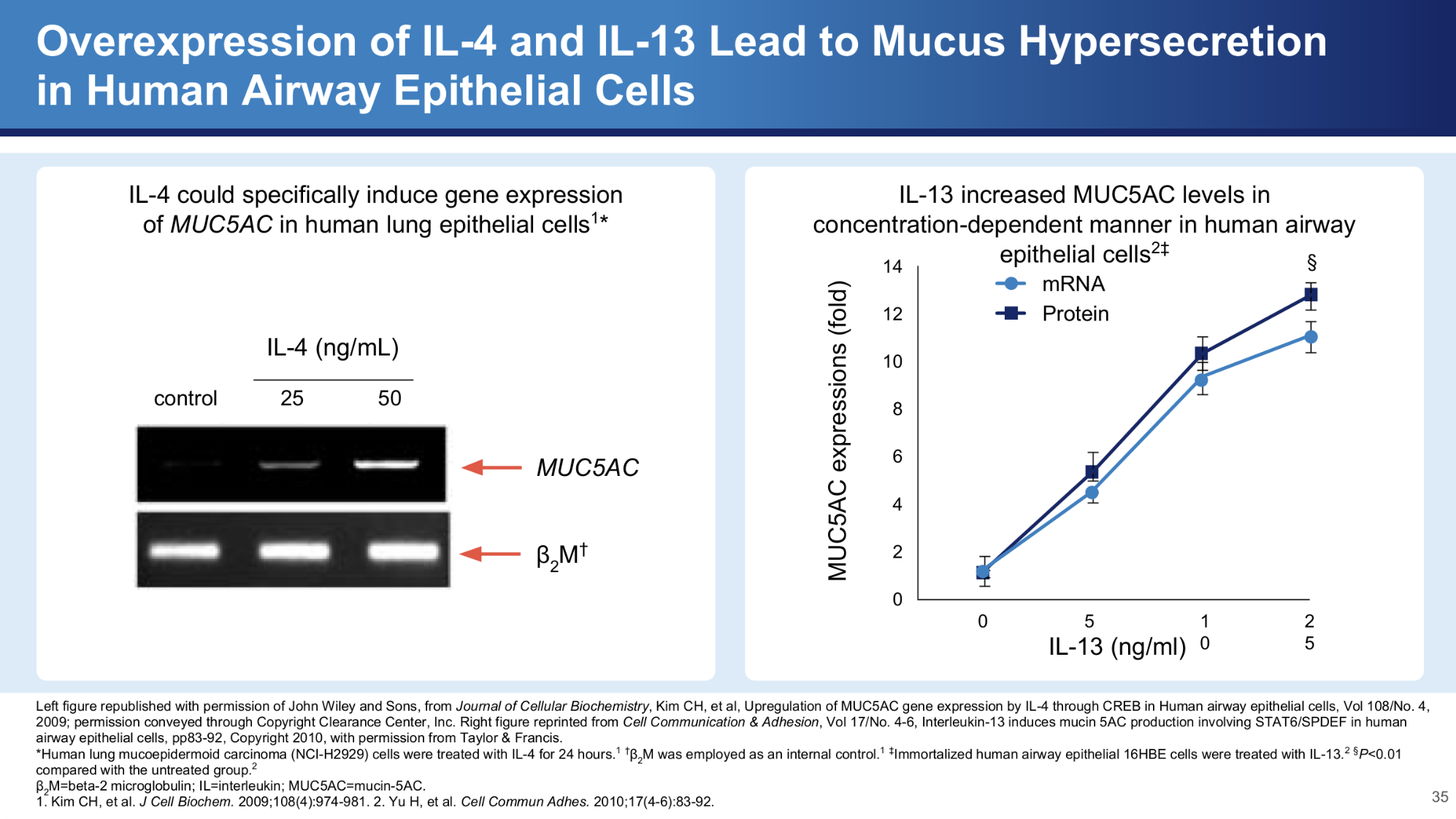- Article
- Source: Campus Sanofi
- 7 Jul 2024
Decoding Type 2 Inflammation in COPD: An Expert’s Perspective

What is the role of type 2 inflammation in COPD?
A deeper look into the underlying pathophysiology and drivers of chronic inflammation, particularly type 2 inflammation, can help us better understand COPD. The key cytokines involved in type 2 inflammation are elevated during acute exacerbations of COPD, and can play a role in mucus hypersecretion in lungs.
Watch the video below to get an understanding on type 2 inflammation and its role in COPD.
The Genesis of Inflammation in COPD
COPD is traditionally associated with exposure to harmful stimuli such as cigarette smoke, air pollution, and respiratory infections. Dr. Bhatt explains that these insults lead to epithelial damage in the respiratory tract, which is the first step in a cascade of inflammatory responses. "In response to any kind of insult, there is some element of epithelial injury and damage," Dr. Bhatt notes, outlining the release of damage-associated molecular patterns (DAMPs), also known as alarmins. These include IL-33, IL-25, and TSLP (thymic stromal lymphopoietin), each playing a crucial role in the amplification of inflammation.
Type 2 Inflammation: Beyond Eosinophils
While eosinophilic inflammation (driven by IL-5) has been the traditional focus in Type 2 inflammation, Dr. Bhatt emphasizes the significant roles of IL-4 and IL-13. These interleukins contribute to various pathological processes in COPD:
-
Epithelial Barrier Disruption: IL-4 and IL-13 can compromise the integrity of the epithelial barrier, making it more susceptible to environmental insults.
-
B Cell Class Switching and IgE Production: These cytokines facilitate B cell transformation and increase IgE levels, which are critical in allergic responses and may exacerbate respiratory symptoms.
-
Mast Cell and Basophil Degranulation: This leads to further release of inflammatory mediators, worsening inflammation and symptom severity.
-
Goblet Cell Hyperplasia and Mucus Overproduction: Particularly driven by IL-13, this results in excessive mucus production, a hallmark of COPD that contributes to airway obstruction and difficulty clearing infections.
-
Airway and Alveolar Remodeling: Chronic inflammation driven by these cytokines can lead to structural changes in the lung, reducing its functionality over time.

Acute Exacerbations and Mucus Production in COPD
Dr. Bhatt notes that IL-4 and IL-13 levels are elevated during acute exacerbations of COPD compared to stable states, underscoring the activation of these pathways during flare-ups. He also addresses the role of mucins in COPD, particularly MUC5AC, which is induced by IL-4 in human epithelial cells. IL-13 also shows a dose-dependent effect on MUC5A and enhances mucus production, marking it as a significant factor in COPD exacerbations.

The MUC5AC Connection
A significant aspect of Dr. Bhatt’s discussion revolves around mucin production, specifically driven by MUC5AC and its regulation by IL-4 and IL-13. "IL-4 can induce increased expression of MUC5AC in human epithelial cells," he explains, highlighting a dose-dependent increase in mucus production driven by IL-13. This pathway is particularly important as it contributes to the characteristic mucus hypersecretion observed in COPD patients.

In Summary
Dr. Surya Bhatt’s insights into the role of Type 2 inflammation in COPD underscore the complexity of this disease and the multifaceted nature of its inflammatory processes. Understanding these mechanisms not only sheds light on the pathophysiology of COPD but also opens new avenues for targeted treatments that could potentially modulate these inflammatory pathways, offering hope for better management of this debilitating disease.
As the field of COPD research continues to evolve, it is clear that integrating insights from experts like Dr. Bhatt will be crucial in developing more effective therapeutic strategies that address the underlying inflammation and its diverse manifestations in COPD patients.
References
- Gandhi NA, Bennett BL, Graham NMH, et al. Targeting key proximal drivers of type 2 inflammation in disease. Nat Rev Drug Discov. 2016;15(1):35-50.
- Yousuf A, Ibrahim W, Greening NJ, et al. T2 Biologics for Chronic Obstructive Pulmonary Disease. J Allergy Clin Immunol Pract. 2019;7(5):1405-1416.
- Aghapour M, Raee P, Moghaddam SJ, et al. Airway Epithelial Barrier Dysfunction in Chronic Obstructive Pulmonary Disease: Role of Cigarette Smoke Exposure. Am J Respir Cell Mol Biol. 2018;58(2):157-169.
- Barnes JP. Inflammatory endotypes in COPD. Allergy. 2019;74(7):1249-1256.
- Wang Z, Bafadhel M, Haldar K, et al. Lung microbiome dynamics in COPD exacerbations. Eur Respir J. 2016;47(4):1082-1092.
- Smithgall MD, Comeau MR, Yoon BRP, et al. IL-33 amplifies both Th1- and Th2-type responses through its activity on human basophils, allergen-reactive Th2 cells, iNKT and NK cells. Int Immunol. 2008;20(8):1019-1030.
- Senra L, Mylonas A, Kavanagh RD, et al. IL-17E (IL-25) enhances innate immune responses during skin inflammation. J Invest Dermatol. 2019;139(8):1732-1742.
- Linden D, Guo-Parke H, Coyle PV, et al. Respiratory viral infection: a potential “missing link” in the pathogenesis of COPD. Eur Respir Rev. 2019; 28(151):180063.
- Global Initiative for Chronic Obstructive Lung Disease (GOLD). Accessed July 27, 2023. https://goldcopd.org/2023-gold-report-2/.
- Calderon AA, Dimond C, Choy DF, et al. Targeting interleukin-33 and thymic stromal lymphopoietin pathways for novel pulmonary therapeutics in asthma and COPD. Eur Respir Rev. 2023;32(167):220144.
- Kurokawa M, Matsukura S, Kawaguchi M, et al. Interleukin-33-activated dendritic cells induce the production of thymus and activation-regulated chemokine and macrophage-derived chemokine. Int Arch Allergy Immunol. 2013;161(Suppl 2):52-57.
- Griesenauer B, Paczesny S. The ST2/IL-33 axis in immune cells during inflammatory diseases. Front Immunol. 2017;8:475.
- Borowczyk J, Shutova M, Brembilla NC, et al. IL-25 (IL-17E) in epithelial immunology and pathophysiology. J Allergy Clin Immunol. 2021;148(1):40-52.
- Claudio E, Wang H, Kamenyeva O, et al. IL-25 orchestrates activation of Th cells via conventional dendritic cells in tissue to exacerbate chronic house dust mite–induced asthma pathology. J Immunol. 2019;203(8)2319-2327.
- Kotlyarov S. Involvement of the innate immune system in the pathogenesis of chronic obstructive pulmonary disease. Int J Mol Sci. 2022;23(2):985.
- Gandhi NA, Pirozzi G, Graham NMH. Commonality of the IL-4/IL-13 pathway in atopic diseases. Expert Rev Clin Immunol. 2017;13(5):425-437.
- Saatian B, Rezaee F, Desando S, et al. Interleukin-4 and interleukin-13 cause barrier dysfunction in human airway epithelial cells. Tissue Barriers. 2013;1(2):e24333.
- Zheng T, Zhu Z, Wang Z, et al. Inducible targeting of IL-13 to the adult lung causes matrix metalloproteinase- and cathepsin-dependent emphysema. J Clin Invest. 2000;106(9):1081-1093.
- Zhu Z, Homer RJ, Wang Z, et al. Pulmonary expression of interleukin-13 causes inflammation, mucus hypersecretion, subepithelial fibrosis, physiologic abnormalities, and eotaxin production. J Clin Invest. 1999;103(6):779-788.
- Alevy YG, Patel AC, Romero AG, et al. IL-13-induced airway mucus production is attenuated by MAPK13 inhibition. J Clin Invest. 2012;122(12):4555-4568.
- Wang X, Xu C, Ji J, et al. IL-4/IL-13 upregulates Sonic hedgehog expression to induce allergic airway epithelial remodeling. Am J Physiol Lung Cell Mol Physiol. 2020;318(5):L888-L899.
- Cooper PR, Poll CT, Barnes PJ, et al. Involvement of IL-13 in tobacco smoke-induced changes in the structure and function of rat intrapulmonary airways. Am J Respir Cell Mol Biol. 2010;43(2):220-226.
- Doyle AD, Mukherjee M, LeSuer WE, et al. Eosinophil-derived IL-13 promotes emphysema. Eur Respir J. 2019;53(5):1801291.
- Sun J, Liu T, Yan Y, et al. The role of Th1/Th2 cytokines played in regulation of specific CD4+ Th1 cell conversion and activation during inflammatory reaction of chronic obstructive pulmonary disease. Scand J Immunol. 2018;88(1):e12674.
- Kim CH, Kim KE, Yoon JH, et al. Upregulation of MUC5AC gene expression by IL-4 through CREB in Human airway epithelial cells. J Cell Biochem. 2009;108(4):974-981.
- Yu H, Li Q, Kolosov VP, et al. Interleukin-13 induces mucin 5AC production involving STAT6/SPDEF in human airway epithelial cells. Cell Commun Adhes. 2010;17(4-6):83-92.
MAT-SA-2400359/V1/Jun/2024